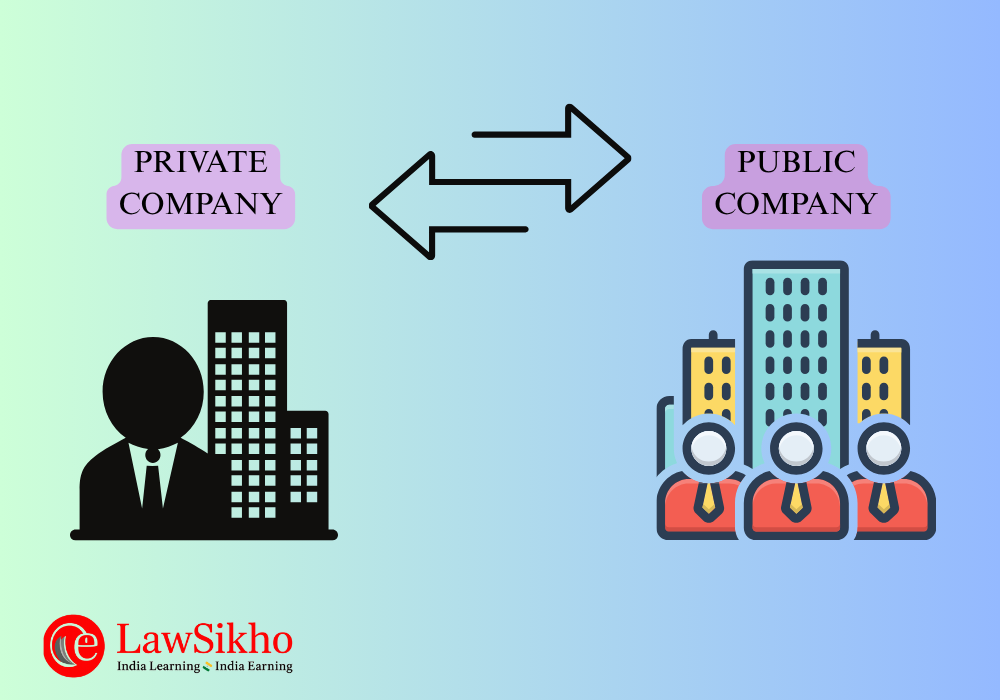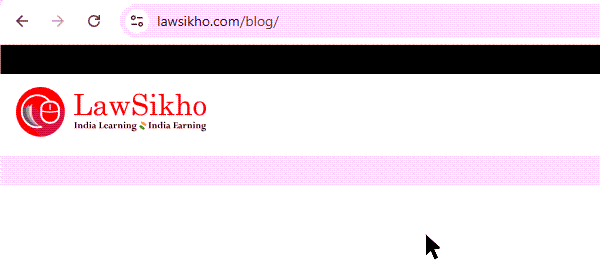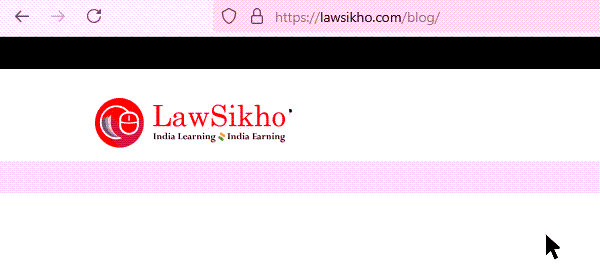Learn how to automate the legal conversion of a private company to a public company using AI tools like ChatGPT. This practical guide for corporate lawyers and company secretaries walks you through checklists, board resolutions, ROC filings, post-conversion compliance, and more under the Companies Act, 2013.
Table of Contents
The legal challenge of private to public company conversion under Companies Act 2013
Anita stared at the email from her CEO, her coffee growing cold as she read it for the third time. “Board meeting tomorrow. We need to convert to public company status ASAP for our Series B funding round. Handle all the paperwork. Timeline: 8 weeks maximum.”
As Company Secretary of Sweet Bites Private Limited, a thriving food manufacturing startup, Anita had handled plenty of compliance work. But a complete conversion from private to public? The thought of coordinating board resolutions, EGM notices, ROC filings, and dozens of interconnected deadlines made her stomach churn.
That afternoon, she was on a video call with Priya, a junior associate at their external law firm.
“I have never handled a conversion before,” Priya admitted, looking equally overwhelmed. “My senior partner just handed me the file and said, ‘Figure it out.’ I am supposed to draft all the legal documents, but honestly, I do not even know where to start.”
Anita nodded sympathetically.
“Same here. The CEO expects a detailed timeline and cost estimate by tomorrow, but every time I look at the Companies Act requirements, my head spins. There are so many forms, so many deadlines…”
“Wait,” Priya interrupted, leaning forward. “What if we try using AI? I heard some lawyers are using ChatGPT for document drafting. Maybe it could help us figure this out?”
Anita raised an eyebrow.
“AI for legal work? Isn’t that risky?”
“Not for everything,” Priya explained.
“But for creating checklists, drafting initial documents, organising timelines—things like that. We would still review everything and make sure it is legally sound.”
What happened next transformed both their approach to legal work and their client’s conversion timeline.
The challenge every legal professional faces
Whether you are an in-house company secretary like Anita or an external counsel like Priya, company conversions present the same overwhelming challenge: coordinating dozens of legal requirements, documents, and deadlines while ensuring nothing falls through the cracks.
Traditional conversion work involves:
- Creating comprehensive compliance checklists
- Drafting board resolutions and EGM notices
- Coordinating multiple ROC filings with tight deadlines
- Managing stakeholder communications
- Ensuring every legal requirement is met precisely
One missed deadline or incorrectly drafted document can derail the entire process—and your client’s funding plans.
Here is where AI becomes your game-changer
What Anita and Priya discovered over the next eight weeks was that AI tools like ChatGPT, Claude, or Grok could serve as incredibly capable assistants for the systematic, time-consuming work that makes conversions so stressful.
This guide will show you exactly how they used AI as their copilot (not pilot—professional judgment remains irreplaceable) to streamline their conversion under the Companies Act, 2013. You will learn their step-by-step approach to generating client-specific checklists, drafting comprehensive legal documents, creating foolproof timelines, and managing the entire conversion process efficiently.
Follow Anita and Priya’s journey from overwhelmed professionals to confident practitioners who completed their conversion ahead of schedule—and discover how AI can transform your legal practice too.
What you need to know before using AI for private to public company conversion under companies act
“Okay, I logged into ChatGPT,” Anita said during their next video call.
“But I have no idea what to ask it. Should I just type ‘convert my company to public’?”
Priya laughed nervously.
“I tried that yesterday. The response was so generic it could have applied to any company in any country. We need to be smarter about this.”
That is when they learned their first lesson: AI is like hiring a brilliant but inexperienced intern.
It has incredible capabilities, but you need to guide it properly to get useful results.
What Anita and Priya discovered about AI
After some trial and error (and a few useless responses), they figured out the key principles:
1. AI needs context, not just commands
Priya’s first attempt: “Draft documents for private to public company conversion”
Result: Generic templates that were incomplete and useless. Click here to see ChatGPT’s response.
Anita’s suggestion: “We are converting Sweet Bites Private Limited to public status under the Indian Companies Act 2013. We have 2 directors and 4 shareholders in the food manufacturing business. What documents do we need?”
Result: Specific, relevant guidance. Click here to see ChatGPT’s response.
“It is like briefing a new junior,” Priya realised.
“You cannot just give orders—you need to explain the situation.”
2. Start simple, build complexity
Instead of trying to get everything perfect in one go, they learned to have conversations with AI:
First question: What are the basic steps for converting a private company to a public company?
Follow-up: “Can you make this specific to Indian law?”
Next: “Add timeline requirements for each step.”
Finally: “Format this as a checklist we can actually use.”
3. Feed AI the right information
Anita gathered Sweet Bites’ essential information:
- Current MOA and AOA
- Board composition (2 directors, both resident Indians)
- Shareholder details (4 individuals, equal stakes)
- Business type (food manufacturing)
- Current compliance status
- Conversion timeline (8 weeks)
“The more specific information we give it, the better responses we get,” she noted.
4. Know what AI can and cannot do
What AI excels at:
- Creating comprehensive checklists
- Drafting initial document templates
- Identifying legal requirements
- Organising complex timelines
- Catching inconsistencies
What AI cannot do:
- Replace professional legal judgment
- Understand client relationship dynamics
- Make strategic timing decisions
- Fill out MCA’s online forms (V3 system)
- Provide legal advice
Their first successful AI conversation
Here’s what actually happened when they tried their first prompt:
Anita: What are the basic steps for converting private company to public company?
AI Response: Provided comprehensive Indian law-specific steps, including Board Meeting → EGM → Form Filing → Certificate issuance, with specific form numbers MGT-14 and INC-27, 30-day deadlines, and Companies Act references. Click here to see the response.
“Wow,” Priya said, reading the response.
“It already knows Indian law. Look—it mentions MGT-14, INC-27, even the 30-day deadline!”
Anita: “This is actually useful. But can you make this more specific to our situation? Our company has 2 directors and 4 shareholders in food manufacturing business.”
AI Response: Identified that they need to appoint an additional director since public companies need a minimum of 3 directors, flagged a minimum of 7 shareholders’ requirement, and mentioned post-conversion compliances. Click here to see the response.
Priya: “Now we are getting somewhere. It caught the director’s issue immediately—we would have missed that!”
The breakthrough moment
“This is actually working,” Priya said after their third successful AI session. “It is like having a research assistant who never gets tired and can instantly recall any legal provision.”
“And it does not judge me for asking basic questions,” Anita added. “I can admit I do not know something without looking incompetent in front of the CEO.”
Setting realistic expectations
They also learned to manage expectations:
- AI provides excellent starting points, but always needs human review
- Multiple iterations work better than perfect prompts—do not expect perfection immediately
- AI handles systematic work, while they focus on client relationships and strategic decisions
- Always verify legal references—AI can make mistakes on specific provisions
Ready for action
Armed with these insights, Anita and Priya were ready to tackle their first major challenge: creating a comprehensive, client-specific conversion checklist that would keep them on track for the next eight weeks.
“Let us start with something simple,” Priya suggested. “Just ask for a basic conversion timeline.”
“And then we will build from there,” Anita agreed.
Their AI-assisted conversion journey was about to begin.
Use AI to generate a conversion checklist that complies with companies act 2013
“Okay, we have the basic steps,” Anita said, reviewing the AI response on her screen.
“But I need something more practical. The CEO wants a detailed project plan he can actually track.”
Priya nodded. “And I need to know exactly what documents to draft and when. Let us see if AI can create a proper checklist for Sweet Bites specifically.”
Building your client-specific action plan
This is where AI really starts to shine.
Instead of generic templates, you can get customised checklists that account for your company’s unique situation.
Step 1: Get a practical, company-specific checklist
“Create a practical, company-specific checklist for converting Sweet Bites Private Limited (2 directors, 4 shareholders, food manufacturing) into a public company under Companies Act 2013.”
The AI response (click here to see) was impressive—a comprehensive, structured checklist with:
- Preliminary assessment table showing exactly what Sweet Bites needs to fix (need 1 more director, 3 more shareholders)
- 8-Step workflow with clear deliverables for each phase
- Specific forms required (DIR-12, MGT-14, INC-27) with filing deadlines
- Post-conversion updates including PAN, GST, bank records
- Optional items for enhanced compliance
“This is exactly what I needed for the CEO,” Anita said, scrolling through the detailed checklist. “Look how it breaks everything into phases with clear deliverables.”
“And it caught the director and shareholder issues immediately,” Priya added. “We would have missed that timing—appointing the director before the EGM makes much more sense.”
Step 2: Make it more actionable
“Can you add specific deadlines and buffer time to this timeline? We need to complete everything in 8 weeks.”
Board and EGM process deep dive
With the overview in place, they focused on specific processes:
“Based on this checklist, draft the board meeting agenda for Step 1. Include all necessary resolutions.”
Timeline coordination
For deadline management:
“If we hold the EGM on August 5th, what are all the specific deadlines? Show this as a calendar with buffer days.”
Quality control through different perspectives
They learned to get multiple viewpoints:
“Review this checklist from a Company Secretary’s perspective. What practical issues might Sweet Bites face?”
“Now review it from an external lawyer’s perspective. What are the biggest legal risks?”
“AI demonstrated the review of the conversion process from different angles in such a beautiful way” Priya noted.
The progressive prompting method
What Anita and Priya discovered was the power of building complexity gradually:
- Start with company specifics – Get customised framework
- Add timing constraints – Refine for your timeline
- Drill down on details – Focus on specific processes
Real results in one afternoon
Using this approach, they created:
- A comprehensive 8-step conversion plan with specific deliverables
- Clear identification of immediate action items (director appointment, shareholder addition)
- Form-by-form filing strategy with deadlines
- Post-conversion compliance roadmap
“I can not believe we got all this detail in just few minutes” Priya said. “The preliminary assessment table alone would have taken me hours to research and create.”
“And look at the deliverables section,” Anita pointed out. “Every step has clear outputs I can track and report to the CEO. This makes the whole project feel manageable.”
Draft EGM notices & explanatory statements
“Alright, we have our board meeting agenda and timeline sorted,” Priya said, reviewing their Week 1 deliverables.
“Now comes another challenge—the EGM notice and explanatory statement. This is what the shareholders will actually see and vote on.”
Anita nodded nervously.
“And the explanatory statement under section 102 needs to be comprehensive but understandable. Some of our shareholders are not familiar with corporate legal language.”
Generating the EGM notice
Priya gave another prompt on the same chat with ChatGPT:
“Draft an EGM notice for Sweet Bites Private Limited conversion to public company on the basis of the meeting agenda. Meeting date August 5, 2025, at registered office in Kochi.”
The response was impressive—a professionally formatted notice with proper company letterhead, three separate special resolutions (conversion, AOA alteration, MOA name change), detailed notes about proxy voting, and complete sign-off formats.
“This looks professional,” Anita said, scanning the output.
“It has all the legal formalities, but…” She paused.
“Mrs. Sharma is going to ask me what half of these terms mean. The resolutions are quite technical.”
Priya had the same concern: “Add a comprehensive explanatory statement under section 102 explaining why this conversion benefits shareholders. Use simple language that non-lawyer shareholders can understand.”
The AI’s second response transformed everything. Instead of dense legal language, it provided clear sections like “Key Benefits of the Conversion” with bullet points explaining:
- “Ease of raising capital” instead of complex financing terminology
- “Business reputation” benefits with practical examples
- What would NOT change (shareholding, voting rights, no additional investment required)
- Clear statement that conversion does not automatically mean stock exchange listing
“Now this is something Mrs. Sharma would actually understand,” Anita smiled.
“Look at this line: ‘This conversion will not affect your shareholding or voting rights.’ That addresses her biggest concern right away.”
Ensuring legal compliance
But Priya was not satisfied yet: “Review this EGM notice for compliance with Secretarial Standards-2. Add any missing statutory disclosures.”
The AI’s compliance review was remarkably thorough—it created a detailed table showing what was compliant versus what was missing, with specific SS-2 clause references:
- Route map and landmark (missing)
- Proxy form as annexure (missing)
- Full registered address with PIN (incomplete)
- Mode of dispatch statement (optional but advisable)
“I can not believe it caught all these details,” Priya marveled.
“It even offered to draft the missing proxy form and generate a route map. This is better than our internal compliance checklist.”
Creating practical meeting documents
With the notice ready, they needed templates for the actual meeting. Anita was nervous about conducting her first EGM with legal implications.
“Create a step-by-step script for conducting the EGM. Include opening formalities, resolution presentation, and voting procedures.”
The script was like having an experienced meeting chair in the room (click here to see the response). It provided exact language for each step:
- “Good morning, ladies and gentlemen. I, [Name of Chairperson], Director of Sweet Bites Private Limited, welcome you all…”
- Specific instructions for quorum checking and recording
- Built-in pauses for questions with guidance on handling them
- Clear explanation of the 75% majority requirement for special resolutions
“This is incredible,” Anita said.
“I was worried about forgetting statutory requirements, but this script walks me through everything step by step.”
Quicker way to prepare meeting minutes
Priya tackled the final piece: “Create an EGM minutes template for recording the conversion approval. Include sections for attendance, resolution voting, and compliance verification.”
The minutes template was comprehensive beyond expectations:
- Structured attendance table with space for member details and signatures
- Complete resolution language ready for recording
- Voting results tabulation for each resolution
- Post-meeting compliance verification section with specific deadlines
- Authorisation language for ROC filings
“Look at this compliance verification section,” Priya pointed out.
“It tracks MGT-14 filing deadline, INC-27 status, when we receive the new Certificate of Incorporation—everything we need to monitor post-meeting.”
The breakthrough realisation
“You know what is amazing?” Anita said, reviewing their complete EGM package.
“We have created documents that are legally reasonable and actually usable. The AI did not just give us templates—it helped us think through the entire shareholder experience.”
Priya agreed: “And we did it through simple conversations, not complex legal prompts. Each question built naturally on the previous answer.”
What they learned about AI collaboration
The key insights from their EGM documentation process:
- Start with basics, refine for audience – The first draft was legally correct but needed accessibility improvements
- AI excels at compliance checking – It caught technical requirements they might have missed
- Ask for different perspectives – “Review this as if you are a company secretary or a lawyer” produced different results
- Request practical tools – Meeting scripts and checklists made implementation easier
- Build comprehensive packages – Each document connects to the others systematically
Their complete documentation suite
Through this iterative conversation, they created:
- Professional EGM notice: Legally compliant with proper formatting
- Accessible explanatory statement: Clear business case without legal jargon
- Compliance review: Detailed checklist ensuring SS-2 requirements
- Meeting execution script: Step-by-step guide for smooth proceedings
- Comprehensive minutes template: Complete recording with built-in compliance tracking
“I feel completely prepared for this meeting now,” Anita said. “We have everything we need to execute professionally.”
“And the best part,” Priya added, “is that we can adapt this process for every client. The AI helps us create custom solutions, not just fill in generic templates.”
Ready for the final phase
With their EGM documentation complete and execution plan ready, Anita and Priya felt confident about the upcoming shareholder meeting.
They knew the real test would come afterward—organising their ROC filings efficiently and managing the post-conversion compliance requirements that would officially complete Sweet Bites’ transformation to public company status.
Post-conversion ROC filings: Deadlines and document checklist
“The EGM went perfectly,” Anita said with relief during their post-meeting video call.
“All resolutions passed unanimously, and the shareholders actually understood what they were voting for thanks to that explanatory statement.”
Priya was equally pleased.
“The meeting script made everything so smooth. But now comes the critical part—we have 30 days to file MGT-14 and need to get INC-27 submitted quickly too. With MCA’s V3 system being web-based, we can not have AI fill out the forms, but we need to make sure we have everything organised perfectly before we start the online filing.”
The new reality: web-based form filing
Before diving into organisation, they acknowledged what had changed.
With MCA’s V3 system, all forms are now filed through web portals. AI cannot directly fill out MGT-14 or INC-27 forms—that has to be done manually through the MCA website.
But here is where AI becomes invaluable: checking deadlines, organising required documents, and planning post-conversion compliance.
Deadline management made simple
“Based on our EGM date of August 5, 2025, what are all the filing deadlines we need to track?” Anita asked ChatGPT.
The response was incredibly detailed—a comprehensive table showing:
- MGT-14: Must be filed within 30 days (deadline: September 4, 2025)
- INC-27: Should be filed concurrently, best by September 4, 2025
- Required attachments for each form clearly listed
- Practical tip: File MGT-14 before INC-27, as ROC will not process conversion without the resolutions on record
- Timeline visualisation in Gantt-style format showing the entire process from EGM to final updates
“This is like having a project manager create our entire timeline,” Priya marveled.
“Look at this—it even shows the sequence: file forms, wait for COI, then update all other registrations.”
The response also included specific attachments for each form:
- MGT-14: Certified EGM minutes, notice with explanatory statement, altered MOA & AOA, board resolution
- INC-27: Altered MOA & AOA, copy of special resolution, director’s declaration, updated director/shareholder lists
“Having this checklist means we will not miss any required attachments,” Anita said with relief.
Post-conversion compliance planning
“Once ROC approves our conversion and issues the new Certificate of Incorporation, what updates do we need to make?” Anita asked.
The response was remarkably comprehensive—a 10-point checklist organised by priority and complexity:
- Immediate updates (Within 15-30 days):
- Update PAN and TAN with new company name (Form 49A)
- Notify GST authorities through portal updates
- Update bank account details and request new cheque books
- Revise all statutory registers and internal records
- Business license updates:
- FSSAI (crucial for food manufacturing)
- Factory licenses with Labour Department
- MSME/Udyam registration updates
- Pollution clearance certificates
- Operational changes:
- Update letterheads, invoices, and email signatures
- Replace physical signage and company seals
- Notify vendors, customers, and business partners
- Update website and digital presence
- Employee-related updates:
- EPFO employer profile changes
- ESIC registration updates
- Shop & Establishment certificate amendments
“I am amazed at how specific this is,” Anita said, reading through the detailed tables.
“It even tells us exactly which portal to use for each update and what supporting documents we need.”
“And look at this,” Priya pointed out.
“It organised everything by authority—Income Tax, GST, Labour Department. This makes delegation so much easier.”
The response even included a timeline recommendation: complete all critical updates within 15-30 days of receiving the COI to avoid compliance gaps or banking delays.
The confidence factor
“I feel so much more organised now,” Anita said, reviewing their comprehensive lists.
“We have clear deadlines, complete document checklists, and a roadmap for everything that comes after ROC approval.”
“The best part,” Priya added, “is that we created all this organisation through simple questions. No complex prompts needed—just asking AI to help us think through each phase systematically.”
The AI had even offered to create additional tools: pre-filled calendar reminders, printable deadline tracker tables, and template letters for notifying stakeholders.
Anyways, you can see the entire chat with ChatGPT here.
Ready for success
With clear deadlines, comprehensive document checklists, and a detailed post-conversion plan, Anita and Priya felt fully prepared to complete Sweet Bites’ transformation. What had started as an overwhelming legal challenge had become a manageable, systematic process, all through the power of simple AI conversations.
Conclusion
Eight weeks after that first panicked email from the CEO, Sweet Bites Private Limited was well on its way to becoming Sweet Bites Limited. But more importantly, Anita and Priya had discovered something transformative about legal practice.
“You know what has changed the most?” Anita reflected.
“It is not just that we completed the conversion faster. It is that we feel confident tackling complex legal work that would have intimidated us before.”
Priya agreed: “AI did not replace our legal expertise—it amplified it. We still made all the important decisions, but AI helped us organise our thinking and ensure we did not miss anything.”
The real takeaway
This is not a story about artificial intelligence replacing lawyers. It is about two legal professionals discovering that AI can be an incredibly powerful tool for:
- Breaking complex projects into manageable steps
- Creating comprehensive, client-specific checklists
- Drafting documents that are both legally sound and practically useful
- Organising workflows that prevent costly oversights
- Building confidence through systematic preparation
Whether you are an in-house company secretary like Anita or an external counsel like Priya, you do not need to become an AI expert to benefit from these tools. Start with simple, conversational questions about your current legal challenge:
- “What are the basic steps for [legal process]?”
- “Create a checklist for [specific situation]”
- “What documents do I need for [filing/procedure]?”
- “What deadlines should I track for [legal matter]?”
Then build complexity through follow-up questions. Let AI handle the systematic work while you focus on professional judgment, client relationships, and strategic decision-making.
The legal profession is not being replaced by AI, it is being enhanced by lawyers who know how to work with AI effectively. Those who embrace these tools today will find themselves working faster, more accurately, and with greater confidence than ever before.
Sweet Bites’ conversion was just the beginning. For Anita and Priya, it was proof that with the right approach, even the most complex legal challenges can become manageable, systematic processes.
Continue your AI-powered legal journey
Ready to explore more AI applications in corporate law? Check out our other practical guides:
- [How to use AI to prepare board reports] – Learn how AI can help you create comprehensive, compliant board reports in minutes instead of hours
- How to use AI to convert preference shares to equity shares – Master another complex corporate restructuring process with step-by-step AI assistance
These articles follow the same practical approach that Anita and Priya used for Sweet Bites’ conversion. Each guide shows you exactly what to ask AI and what responses to expect, making complex legal processes manageable and systematic.
The future of legal work is not about choosing between human expertise and artificial intelligence. It is about combining both to deliver better results for your clients and greater satisfaction in your work.
Start building your AI-assisted legal practice today—one conversation at a time.
FREQUENTLY ASKED QUESTIONS
1. Can AI really help with converting a private company to a public company under Indian law?
Yes. AI tools like ChatGPT and Claude can assist by generating conversion checklists, drafting board resolutions, EGM notices, explanatory statements, and tracking ROC filing deadlines under the Companies Act, 2013. While they don’t replace professional legal judgment, they dramatically speed up documentation and compliance workflows.
2. What specific documents can AI help draft during the conversion process?
AI can generate:
- Board meeting notices and resolutions
- EGM notices and explanatory statements (Section 102)
- Altered MOA and AOA drafts
- MGT-14 and INC-27 filing checklists
- Minutes of meetings and shareholder communication templates
Each of these can be customized to your company’s size, timeline, and compliance status.
3. Is AI useful for managing ROC filings like MGT-14 and INC-27?
AI cannot fill MCA forms directly (due to V3 portal limitations), but it can:
- Organize all required attachments
- Set filing deadlines with buffer days
- Generate filing checklists and Gantt-style timelines
- Review whether resolutions and explanatory statements comply with Secretarial Standards (SS-2)
4. What are the biggest compliance risks in a private-to-public conversion, and can AI help mitigate them?
The major risks include:
- Failing to meet director/shareholder thresholds
- Missing form filing deadlines
- Incomplete explanatory statements or resolutions
AI helps mitigate these by flagging gaps early (e.g., “you need at least 3 directors”), generating checklists tailored to your facts, and offering compliance reviews with clause-specific feedback.
5. How is AI better than using a generic checklist or template?
Unlike static templates, AI builds a document-specific, timeline-aware, and fact-sensitive action plan. It helps you:
- Customize your workflow based on your MOA/AOA, team size, and business sector
- Adjust timelines to real EGM dates
- Draft shareholder-ready documents with plain English explanations
- Anticipate form dependencies (e.g., MGT-14 before INC-27)
This makes it an interactive, adaptive assistant—far more effective than static checklists.






 Allow notifications
Allow notifications

Thanks for sharing the useful blog related to the legal conversion, it helps to improve reliability and legal conversion of public to private company.